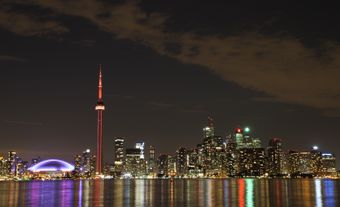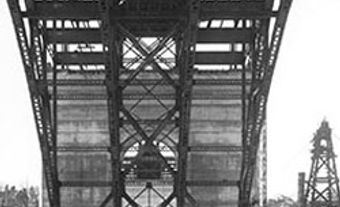Joseph Bloor, innkeeper, brewer (also spelled Bloore; born in 1789 near Staffordshire, England; died 31 August 1862 in Toronto, ON). Bloor is the namesake of Toronto’s Bloor Street and was a prominent innkeeper and brewer in the early half of the 19th century. He was the founder of the village of Yorkville, which is now part of the city of Toronto.

Early Life in Canada
Joseph Bloor immigrated to Upper Canada either in 1818 or 1819 with his wife Sarah Lees. They eventually settled with their three children in the town of York. Bloor began working as a farmer before his career as an innkeeper began in earnest a few years later. He ran the Farmer’s Arms Inn on King Street (sometimes called Farmer’s Inn), from 1824 to 1831. The inn was located roughly on the site where Toronto’s St. Lawrence Hall stands today.
Bloor used the profits from his inn to purchase several tracts of land that would later become the site of Bloor Street. Together with then Sheriff William Jarvis (for whom Jarvis Street in Toronto is named), he founded the village of Yorkville. Yorkville is generally considered to have been Toronto’s first suburb. By this time, Bloor’s family now numbered six, and he moved it to his new village.

Life as a Brewer
Soon after Joseph Bloor began selling small lots in his new suburb, he opened a brewery in the Rosedale Valley, near the present-day location of Sherbourne Station. (See also Brewing Industry in Canada.) His business competed with another local brewery, the Severn Brewery, for the profitable trade in beer. Bloor’s brewery required both water and water power for the brewery’s machinery, so he dammed the Castle Frank Brook to provide both. The resulting pond became a popular spot for summertime swimming and wintertime skating.
Though the topography and geography of Toronto has changed considerably since the early to mid 19th century, the brewery is said to have been located somewhere under the Sherbourne Street viaduct. Bloor sold his brewery to a man named John Rose in 1843, and it was then renamed the Castle Frank Brewery. Bloor and Jarvis turned their attention to subdividing the land and selling lots, and from there the village of Yorkville grew.

Origins of Bloor Street
Bloor Street was originally a dirt path named the Second Concession Line by surveyors. At the intersection of this dirt path with the road once called the Road to Yonge Street, a tollgate was erected. From then on, the dirt road at the Second Concession Line was called Tollgate Road. When St. Paul’s Anglican Church was built on the south side of the concession road in 1842, the name changed again to St. Paul’s Road.
At around this time, a village was developing near the brewery owned by Joseph Bloor. The area might have temporarily been called Blooreville before taking its better known and current name, Yorkville. Not long after, Bloor built himself a large house on the south side of the concession road, just east of Yonge Street, and not long after, the road took his name.
Did You Know?
It is unclear as to how exactly Joseph Bloor spelled his last name during his lifetime, since both Bloor and Bloore have been used. It is worth noting that his headstone in Toronto’s Necropolis is spelled with an ‘e,’ as are the inscriptions for his wife and children, all of whom are buried nearby and died many years after Joseph.

Commemorative Tablet
Aside from the street name, Joseph Bloor was recognized shortly after his death in 1862 with a large stone tablet that recognized his substantial contributions to the construction of the Bloor Street Methodist Church. The church was built across from where he lived. The tablet was moved across the street to the Westminster Presbyterian Church when the churches merged in 1925. They were then joined by the old St. Andrew’s United Church congregation, and the commemoration to Bloor remained there until the old church was demolished in the 1980s. The tablet was saved from destruction by the Toronto Historical Board. It was reinstalled near the location of the old church, at 117 Bloor Street East, in 2017.

 Share on Facebook
Share on Facebook Share on X
Share on X Share by Email
Share by Email Share on Google Classroom
Share on Google Classroom




